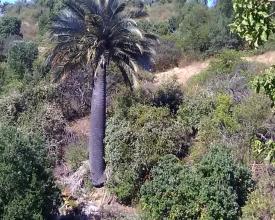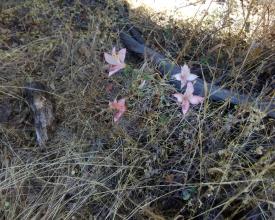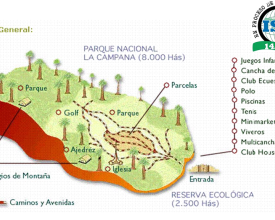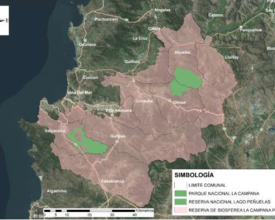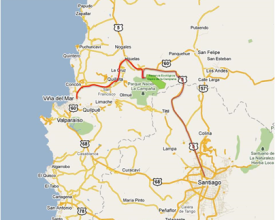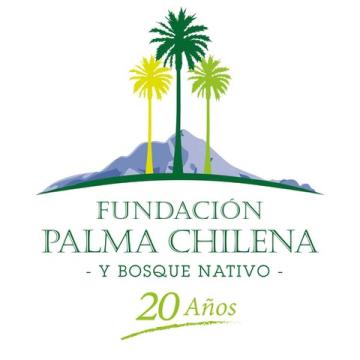
How a real estate project can ensure longterm financing for the conservation of a wilderness area
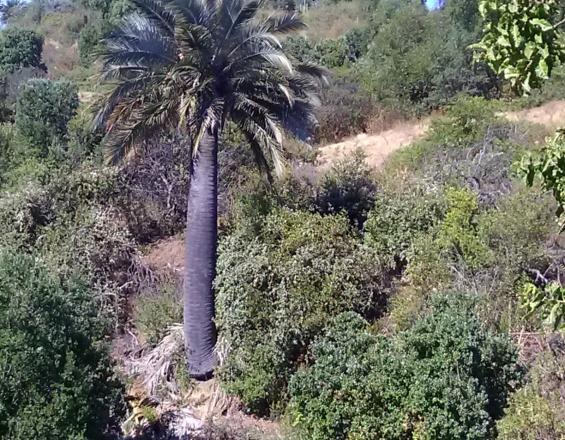
Through a real estate project "Reserva Ecologica Oasis de la Campana" it is possible to protect 1000 hectares of sclerophyllous forest of Mediterranean ecosystem. The project destines a sector that is subdivided into properties of 0.5 hectares for real estate purposes and another sector of 1000 hectares to conservation of Mediterranean forest and its biodiversity. Through the legal framework of reciprocal environmental easements between the parcels of the real estate sector and the area destined for conservation and the delivery of these lands to a non-profit Foundation, the legal protection in perpetuity of the 1000 hectares is ensured. On the other hand, this same legal framework ensures that the common expenses of the owners of the real estate subdivision finance not only the maintenance of their common areas but also the maintenance activities of the wilderness area to be conserved. This includes protection and restoration activities.
Contexte
Challenges addressed
The mediterranean ecosystem has the highest population concentration in the country. So, there is a scarce presence of land of importance for conservation since the majority has been replaced by agricultural activities of intensive production such as avocado or citrus plantations, vineyards and real estate projects. The Lands are mainly private without land system of agricultural or indigenous communities. Therefore, they are Land of high commercial value, so allocating them to conservation has a high cost. This means that possible donations are destined to other ecosystems where for the same funds one can, for example, buy more hectares to allocate to conservation or ensure their management with less financing. On the other hand, it has been necessary to educate the community to understand the legal system and individual commitment that it allows to contribute economically to ensure the long-term protection of a wild area.And in the Real State market show the advantage of this project
Emplacement
Traiter
Summary of the process
First, a real estate project is developed that must be important for the conservation of biodiversity and the constitution of a protected wild area. The project considers an area with real estate subdivision and an area dedicated to wildlife conservation. In this way the real estate project "Oasis de la Campana" manages to protect 1000 hectares of endangered sclerophyllous forest of Mediterranean ecosystem, contribute to the La Campana National Park with which it limits for 7 kilometers and contribute to the core area of the Biosphere Reserve La Campana- Peñuelas. Improves the quality of life of the owners and community by protecting watersheds and greater availability of water, control erosion and sediment retention, climate regulation, carbon capture and fixation and biodiversity conservation.
Second, the legal framework that allows voluntary agreements to remain in time is sought, both to ensure the conservation of a protected area in perpetuity and to ensure financial support for protection and restoration. For this, reciprocal environmental easements apply. This is complemented by creating a Foundation for the area to be conserved and also establishing internal regulations for the real estate subdivision area.
Building Blocks
Real Estate Project with environmental objectives
A real estate project is created that not only includes subdivisions for housing. It is intended that the location of the project is in an area that helps the conservation of biodiversity, for example, the presence of endemic species or conservation problems, or ecosystems that are hotspots. The most important sector for biodiversity is dedicated to conservation and this is incorporated as an ecological Reserve for the project without the existence of subdivisions for housing. On the other hand, the section that is destined to the subdivision for dwellings also establishes environmental restrictions of constructibility (eg no fences that avoid transit of fauna) and behavior (eg, not hunting). It also promotes the protection and restoration of fauna and flora in subdivisions for housing and in the sector destined to reserve.
This is how a real estate project is offered with a plus that helps conservation.
Enabling factors
Mainly have a Real State company with interest in conservation and who see that you can also have an economic activity conserving. On the other hand buyers who have an interest in conservation or who see the dvantage of buying in a place where the conservation of biodiversity and landscape is assured in the long term.
Local community that values the conservation initiative and that the land is not used for other intensive productive purposes.
Lesson learned
That it is possible to develop a real estate project that helps conservation and that is economically profitable. That there are people interested in buying in this type of projects with a natural environment and a conservation mission. Which is an instrument that can be used for conservation in land of high commercial value where it competes with other economic activities that not preserve biodibversity. That is a type of project that also gives work to the local community.
But still it is needed a lot of education because many times just out of ignorance the Realtors feel that an important area for biodiversity within their property is more a problem than an opportunity. Also the people who buy sometimes do not understand the importance of the biodiversity that surrounds them since they come from more urban sectors. And also because they are inciativas with private origins cause distrust in that in fact you want to make conservation, so it is important to have available regulatory legal frameworks.
Resources
Reciprocal Conservation easements to assure long term conservation and financing of protected area
The Oasis de la Campana real estate project allocates a sector that is subdivided into properties of 0.5 hectares for real estate purposes and another sector of 1000 hectares to conservation of Mediterranean forest and its biodiversity. Through the legal framework of reciprocal environmental easements between the parcels of the real estate sector and the area destined for conservation and the delivery of these lands to a non-profit Foundation, the legal protection in perpetuity of the 1000 hectares is ensured.
On the other hand, this same legal framework ensures that the common expenses of the owners of the real estate subdivision finance not only the maintenance of their common areas but also the maintenance activities of the wilderness area to be conserved. This includes protection and restoration activities such as: construction and maintenance of perimeter fences to prevent the entry of livestock, personnel for horseback monitoring to control fencing deterioration, poaching and fire prevention; restoration activities with planting of native plant species and scientific studies with universities. And maintenance of trails, signage and infrastructure as viewpoints and a refuge.
Enabling factors
The legal framework in the country that allows the implementation of reciprocal easements for environmental purposes.
The legislation of the countries of Latin America to be derived from the Roman Code usually include this legal framework. On the other hand alglosaxon laws also have similar systems or through the Royal Right of conservation. In this way it has a wide application in different countries.
Lesson learned
Many times there are very old legal frameworks such as easements that for lack of imagination have not been applied and that can be very useful for the conservation of biodiversity and protected areas in perpetuity.
In this way, reciprocal environmental easements also ensure perpetuity protection and the financing of the maintenance costs of the wilderness area to be conserved, which is one of the most critical financing in a protected area. Many times protected areas are created or land is purchased for this purpose, but then there is not the necessary financing to ensure their protection permanently. This is a good example of how to do it and that has been operating for more than 20 years in Oasis de la Campana.
On the other hand, allocating the conserved lands to a non-profit Foundation ensures a correct administration
The owners of the subdivision earn by protecting their lands and by preserving 1000 hectares, they ensure the protection of the landscape and have environmental services that contribute to the whole community.
Impacts
Oasis de la Campana is part of the Mediterranean forest of central Chile, an ecosystem of high endemism of great importance for biodiversity and hot spot worldwide.Through a real estate project "Oasis de la Campana" it is possible to protect and restore 1000 hectares of sclerophyllous forest of Mediterranean ecosystem, avoiding the presence of livestock and extraction of wood for coal; contribute to the La Campana National Park with which it limits for 7 kilometers and contribute to the core area of the La Biosphere Reserve La Campana - Peñuelas.The maintenance costs of the wilderness area to be conserved have been ensure for more than 20 years.It has succeeded in reproducing the Chilean Palm and other endangered plants. More than 10,000 palms have been planted. The owners of the real estate subdivision have protected the native vegetation of their properties and favored its restoration. In this context, the real estate subdivision of the condominium is also regulated. The owners of the subdivision earn by protecting their lands and by preserving 1000 hectares, they ensure the protection of the landscape and have environmental services that contribute to the whole community, as well as the great importance of their contribution to the conservation of biodiversity. The real estate wins by offering a better product and manages to attract and generate investment in a better way.
Beneficiaries
La Campana National Park with which it limits for 7 kilometers and to the core area of La Biosphere Reserve La Campana-Peñuelas. The owners and community: greater availability of water, control erosion and sediment,carbon capture and biodiversity
Sustainable Development Goals
Story
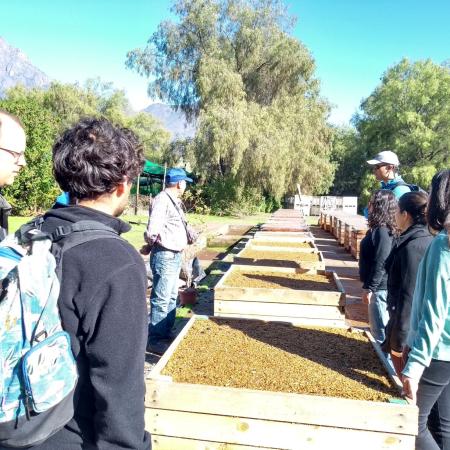
During the 90s to know protected wild areas like the Kruger National Park or others in South Africa, experiences of private participation in conservation in the USA and the Yosemite National Park and in the case of Chile the realization of the First Park Management Plan Nacional la Campana from which it participated, inspired the Moreno Family to carry out a conservation project that will help protect the sclerophyllous forest of central Chile, a hot spot worldwide, and the Chilean palm (Jubaea chilensis), an endemic species and the the southernmost palm in the world.
The Chilean palms inspired to look for an economically sustainable project and that will help the protection of a wild area in the long term. The Oasis de la Campana real estate project allocates a sector that is subdivided into properties of 0.5 hectares for real estate purposes and another sector of 1000 hectares to conservation of Mediterranean forest and its biodiversity. Through the legal framework of reciprocal environmental easements between the parcels of the real estate sector and the area destined for conservation and the delivery of these lands to a non-profit Foundation, the legal protection in perpetuity of the 1000 hectares is ensured.
In this way, the financing of the maintenance costs of the wilderness area to be conserved is ensured, which is one of the most critical financing in a protected area. Many times protected areas are created or land is purchased for this purpose, but then there is not the necessary financing to ensure their protection permanently. This is a good example of how to do it and that has been operating for more than 20 years in Oasis de la Campana.The Moreno family has continued promoting these initiatives through the "Foundation for the Recovery of the Chilean Palm and the native forest" and educating for its implementation.
